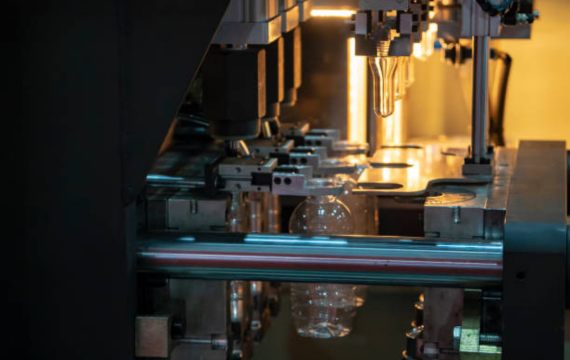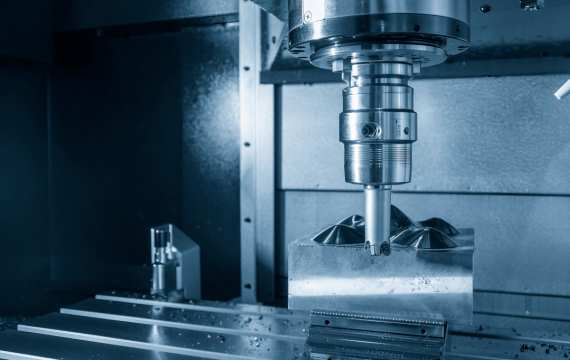Definition and Purpose of a Molding
Molding is referred to as a manufacturing process that involves shaping malleable material, which is usually in a raw or liquor form. This process usually occurs in a container comprising a whole metal body. The objects that need to be molded include metal, liquid plastic, glass or ceramic. The primary purpose of this process is to create identical copies of the initial object.

Types of Moldings Process
Here’s a breakdown of different types of molding process:
- Injection Molding: this type of molding is used in the production of quality objects for commercial use in industries. The objects are usually 3-dimensional in nature. The first step of this molding process is to melt down the plastic in a container. Once that process is completed, The plastic is then injected into the chilled mold which is tightly closed. Because it’s in a hot liquid form, The plastic quickly adapts to the surrounding’s shape.
- Casting: This type of molding process is considered to be the basic one. It requires less effort and easy simple technology as compared to the other methods. Objects in a plastic form are heated for a certain amount of time at a desired temperature. Once those objects are converted into a liquid form, they are then transferred to the mold.
- Blow Molding: This type of molding is normally used for forming glass bottles or other hollow shapes of objects. In this process, Plastic is heated until it becomes molten. Once that is completed, The material is then injected into the mold containing a specific shape. Once the material has cooled and become hard, the mold opens and the part comes out of it.
- Rotational Molding: Toys, transport drums, tanks that are used for storage and furniture are made using rotational molding. This process coats the inside of the mold to create each item. The mold is held by mechanical fingers that rotate it while molten plastic is poured inside. As the mold rotates, the plastic covers the inside, creating a new plastic object with a hole.
- Compression Molding: This type of molding process requires most human efforts. Therefore, it is by far the most effective for use in large production functions and no longer for mass production. This type of molding is mostly used in making car tires or ship hulls.

Steps in the Molding Process
The molding process contains several steps to enable the formation of the final product. It starts with materials preparation where the right material is chosen and prepared in the right form for application. Following this is mold making to involve drawing up a detailed plan and hen using strong materials to produce the mold. The molding step is the next one, in which the prepared material is placed into the mold under conditions necessary to form the desired product.
Finally, the material has to be cooled and set to obtain its shape and stability, with the techniques of air or water quenching. The final stage of the casting process is to take the product out of the mould and apply any finishing operations such as cutting, polishing or painting to meet the required standards.
Applications of Moldings in Various Industries
- Automotive Industry: Moldings are used to produce a wide range of automotive components. This type of equipment mostly includes panels for the door, car dashboards, front grills and bumpers. These parts are used to enhance vehicles’ aesthetic appeal and functionality.
- Medical Devices: Production of medical devices including syringes, catheters and IV components requires moldings. This is to ensure that these products are manufactured under very strict guidelines for health and safety practices.
- Food and Beverage Containers: There are different packaging solutions that involve molding such as bottles, caps among others in the food and beverage industry. They preserve freshness and security.
- Toy Industry: Safety is guaranteed while creating detailed top-quality action figures, dolls among others in the toy industry through molding techniques.

Why Molding is Important
Mold design serves a key function in manufacturing by presenting the equipment and templates needed to produce multiple identical copies of the product as it should be. A well-designed mold is important for accurate and cost-effective production, ensuring accurate dimensions, a minimal number of variations, and excellent output.
It enables manufacturers to quickly adapt to changing market demands, maintain operational efficiency, and achieve first-class results. In addition, a well-designed mold can reduce fabric waste and increase the base production rate, contributing to a more sustainable and profitable method of production.
Safety Tips for Molding Operations
Ensuring safety in molding operations is vital to guard workers and maintain a safe, productive working environment. Here are some essential protection measures to follow whilst working with molding systems and materials:
- Safe Handling Guidelines: Ensure all employees are properly trained in working molding machines and handling substances.
- Material Safety Data Sheets (MSDS): Familiarize yourself with the MSDS for all materials used, understanding the ability hazards and suitable handling methods.
- Safe Storage: Store materials in a designated place, far from heat resources and direct sunlight, to save you degradation and capability hazards.
- Eye protection: Your eyes must also be shielded to reduce risks of one getting splashed or having loose particles in the face.
- Gloves: In contacts with the warm substances and the system, one should put on the heat resistant gloves.
- Protective Clothing: Cover the hands and legs with longs sleeves and pants and suitable shoes to avoid burning and chemical penetration.
- Respirators: Use respirators when dealing with the toxic and dangerous materials so as not to breath in poisonous fumes.
On the other end, Regular maintenance of machinery is vital to ensure protection and efficiency in molding operations. Conducting day-by-day inspections enables one to become aware of and address wear and tear early on. Keeping equipment well-lubricated and clean prevents malfunctions and guarantees clean operation. Promptly replacing any worn or broken components avoids breakdowns and keeps the equipment protected and performing well. Additionally, it’s vital to ensure that each one of the emergency forestalls buttons and safety guards are functioning effectively and are easily reachable.
FAQs
● What Materials Can Be Used in Molding Processes?
Mold techniques can use a variety of materials that include metals, plastics, glass and ceramics. Each material is selected entirely based on the desired homes and the use of the final product.
● Which of the Molding Technique Is Most Frequently Used?
Injection molding is one of the most versatile and common methods of molding. It is especially appreciated for the fact that it can well create complex, sharp images, on an industrial level.
● How Does Blow Molding Differ From Other Molding Approaches?
Blow molding is used specifically to create hollow objects such as bottles. In this method, hot liquid plastic is forced into a mold and then expanded to expand the hole’s shape in this case.
● Why Is Rotational Molding Used for Large Items Like Tanks and Furniture?
Rotational molding is good for large hole equipment because it allows for uniform coating of the interior surfaces of the mold, resulting in strong, uniform products. The procedure also supports complex shapes and massive sizes.
● What Are the Requirements for Protection When Working With Molding Machines?
Safety in pressing operations consists of proper training, sports protective equipment along with protective glasses and gloves, safe storage of materials and daily maintenance of machines. It is also important to familiarize yourself with the safety data sheets (MSDS) for all substances used.
● Can Molding Processes Be Used in the Scientific Industry?
Yes, molding techniques are used significantly in the clinical enterprise to deliver precise and safe components that include syringes, catheters and IV elements. These products are synthetic under strict health and safety recommendations to ensure high safety.




